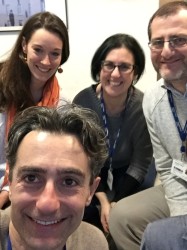BibTex format
@article{Hervera:2018:10.1038/s41556-018-0039-x,
author = {Hervera, A and De, Virgiliis F and Palmisano, I and Zhou, L and Tantardini, E and Kong, G and Hutson, T and Danzi, MC and Perry, RB-T and Santos, CXC and Kapustin, AN and Fleck, RA and Antonio, Del Rio J and Carroll, T and Lemmon, V and Bixby, JL and Shah, AM and Fainzilber, M and Di, Giovanni S},
doi = {10.1038/s41556-018-0039-x},
journal = {Nature Cell Biology},
pages = {307--319},
title = {Reactive oxygen species regulate axonal regeneration through the release of exosomal NADPH oxidase 2 complexes into injured axons},
url = {http://dx.doi.org/10.1038/s41556-018-0039-x},
volume = {20},
year = {2018}
}

